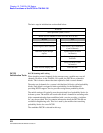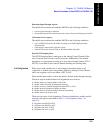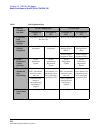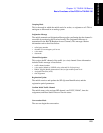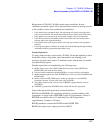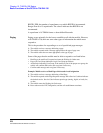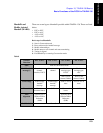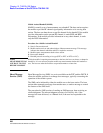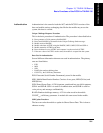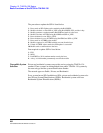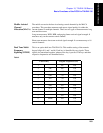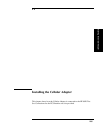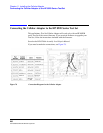
280
S:\HP83206A\USRGUIDE\MANUAL\is136bas.fm
Chapter 10, TIA/EIA-136 Basics
Basic Functions of the DCCH in TIA/EIA-136
Mobile Assisted Handoff (MAHO)
MAHO is actually a set of measurements, not a handoff. The base station requires
the mobile to provide RF channel signal quality information to its serving base
station. The base can then choose a specific channel for the handoff. If the mobile
provides information on the present RF channel, it sends RSSI and BER
information. If the mobile provides information on any other channel, it sends
only the RSSI information.
Procedure for a Mobile Assisted Handoff
1. Start in Conversation task
2. Mobile station receives and acknowledges a Measurements message. This message
indicates the channels which the mobile is required to measure.
3. Mobile reports measurements back to base station.
4. Base orders handoff.
5. Handoff proceeds according to its type (DTC to DTC or DTC to AVC).
MAHO
MEASUREMENTS DO
NOT HAVE TO STOP
BEFORE HANDOFF
While the mobile is reporting measurements to the base, the base can choose a channel to
handoff to. It is not necessary that the mobile stop measurements before this handoff oc-
curs. The base can order the mobile to stop measurements at a later time.
Short Message
Service (SMS)
Short Message Service (SMS) is a service available on the DTC and the DCCH. It
allows the mobile and base to exchange short messages, typically concerning the
operation of the cellular system.
The SMS can be initiated by either the mobile user or the base station. The base
station either transmits a message from another user, or sends a message to control
the features of the SMS itself.
The procedure for SMS consists of sending an SMS message, then receiving an
acknowledgment. The acknowledgment consists of a Delivery Ack, if the
message has been delivered, or a Manual Ack, if the user has responded to the
message.



